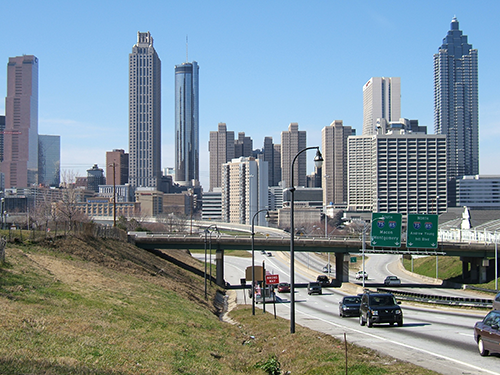Jun 10 2016 Final round of federal Promise Zone communities announced
 Atlanta, Nashville, and South Los Angeles are among the final round of communities to be designated this month as federal Promise Zones. In his 2013 State of the Union Address, President Obama announced the creation a new Promise Zone Initiative as part of an effort to create opportunities for middle class Americans by “partnering with local communities and businesses to create jobs, increase economic security, expand educational opportunities, increase access to quality, affordable housing, and improve public safety.”
Atlanta, Nashville, and South Los Angeles are among the final round of communities to be designated this month as federal Promise Zones. In his 2013 State of the Union Address, President Obama announced the creation a new Promise Zone Initiative as part of an effort to create opportunities for middle class Americans by “partnering with local communities and businesses to create jobs, increase economic security, expand educational opportunities, increase access to quality, affordable housing, and improve public safety.”
This final round of nine communities was chosen from 82 applications from 38 states and Puerto Rico. With 13 other Promise Zones across the country, there are now 22 such designated areas. (For a full list of Promise Zone communities, see this recent press release from the Department of Housing and Human Development.) Each applicant community is asked to explain how the Promise Zone designation will enable it to accelerate its own comprehensive community revitalization efforts, with a high premium put on partnerships.
“Promise Zones bring the power of partnership to a whole new level as we seek to bring opportunity to neighborhoods long locked out of their area’s prosperity,” said HUD Secretary Castro. “As a former mayor from a city that includes a Promise Zone, I know just how powerful these collaborations are when it comes to building stronger, economically vital neighborhoods.”
The Promise Zone designation brings access to federal investments, federal staff on the ground to help communities access federal resources, and five full-time AmeriCorps VISTA members to recruit and manage volunteers and strengthen the capacity of the Promise Zone initiatives.
Promise Zones are reminiscent of the mid-1990s, Clinton-era “Empowerment Zones” established in six financially distressed communities across the United States. Professors Michael Rich and Robert P. Stoker studied these neighborhoods in Atlanta, Baltimore, Chicago, Detroit, New York City, and Philadelphia — each of which received a $100 million federal block grant and access to a variety of powerful policy tools, with the goal of increasing economic opportunities.” In “Collaborative Governance for Urban Revitalization: Lessons from Empowerment Zones,” Rich and Stoker argue that governance that emphasizes a cross-sector approach to problem solving was a significant factor in the success of Empowerment Zones. “ Good governance matters. Not just the effectiveness of the city government but also how well the cities fostered a collaborative approach to tackling the problems. … Did the city have representation from key sectors to be involved in solutions and how broad-based was that representation?”
Early Promise Zone successes also suggest that cross-sector collaboration is important.
- In Indianapolis, the IndyEast Promise Zone — which relies on collaboration among residents, businesses, and all levels of city government — has been awarded nearly $10 million in federal grants across seven different agencies and worked to create 110 jobs, provide workforce training to hundreds of formerly incarcerated individuals, and develop new housing for low-income senior citizens.
- The EastSide Promise Zone in San Antonio — which relies on the City, partners such as the United Way, and local businesses — has provided free job training certifications in nursing, construction, manufacturing, information technology, and heavy equipment for 106 residents, contributing to a decline in unemployment rates from 15 to 11 percent over the last four years.
